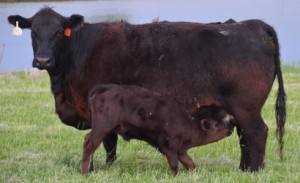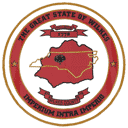Switching Gears for Next Year’s Calf Crop
go.ncsu.edu/readext?433784
en Español / em Português
El inglés es el idioma de control de esta página. En la medida en que haya algún conflicto entre la traducción al inglés y la traducción, el inglés prevalece.
Al hacer clic en el enlace de traducción se activa un servicio de traducción gratuito para convertir la página al español. Al igual que con cualquier traducción por Internet, la conversión no es sensible al contexto y puede que no traduzca el texto en su significado original. NC State Extension no garantiza la exactitud del texto traducido. Por favor, tenga en cuenta que algunas aplicaciones y/o servicios pueden no funcionar como se espera cuando se traducen.
Português
Inglês é o idioma de controle desta página. Na medida que haja algum conflito entre o texto original em Inglês e a tradução, o Inglês prevalece.
Ao clicar no link de tradução, um serviço gratuito de tradução será ativado para converter a página para o Português. Como em qualquer tradução pela internet, a conversão não é sensivel ao contexto e pode não ocorrer a tradução para o significado orginal. O serviço de Extensão da Carolina do Norte (NC State Extension) não garante a exatidão do texto traduzido. Por favor, observe que algumas funções ou serviços podem não funcionar como esperado após a tradução.
English
English is the controlling language of this page. To the extent there is any conflict between the English text and the translation, English controls.
Clicking on the translation link activates a free translation service to convert the page to Spanish. As with any Internet translation, the conversion is not context-sensitive and may not translate the text to its original meaning. NC State Extension does not guarantee the accuracy of the translated text. Please note that some applications and/or services may not function as expected when translated.
Collapse ▲ As many producers wrap up calving season, it’s time to switch gears and start thinking about next year’s calf crop. Here are seven things to put on your pre-breeding checklist:
As many producers wrap up calving season, it’s time to switch gears and start thinking about next year’s calf crop. Here are seven things to put on your pre-breeding checklist:
- Don’t forget the breeding soundness exam
A herd sire is often one of the largest investments a cow-calf producer makes. Be sure to have a veterinarian conduct a breeding soundness examination to ensure that your bull’s battery is ready to get to work. In addition, make sure non-virgin bulls are tested for trich to avoid a major train wreck with the spread of disease, abortions and open cows.
- Purchase semen
If you’re planning to artificially inseminate (AI) cows and heifers, it’s time to pour over those semen catalogs and select the genetics you want to incorporate into next year’s calf crop. Keep in mind the goals of your operation, and write down your planned breedings. It’s easy to forget when it’s actually time to breed, so having a written plan of attack can keep you and your help on track on breeding day.
- Choose your artificial insemination breeding protocol
Do you plan to synchronize your cows for artificial insemination? If so, which breeding protocol do you plan to follow? Producers can choose the vaginal implant CIDR, the oral feed additive Melengestrol Acetate (MGA), or GnRH products such as Cystrorelin, Factrel, and Fertagyl to synchronize estrus in cows.
- Evaluate body condition scores
Females that are on an upward plane of nutrition tend to have an easier time getting pregnant. Make sure your cows are in good breeding shape and supplemental feed any heifers or lactating cows that might need a little extra help getting there.
- List matings for pastures
When it’s time to haul pairs to pasture, it’s important to note the grazing capacity of each pasture, which bull you plan to have where, and which cows will be the best mating for each bull or group of bulls you plan to expose them to. Double check your pairings to avoid line breeding or any mismatches that could potentially cause dystocia problems next calving season. Make your list and check it twice to make things easier at turnout time.
- Purchase pre-breeding vaccines
If you work your cow-calf pairs before turnout time, now is a great time to check in with your veterinarian (maybe when he comes out to conduct the breeding soundness exams on your bulls) and purchase any pre-breeding medicines and de-wormers. Remember to read through the vaccine protocols to refresh yourself on proper handling, injection methods and other considerations and check it twice to make things easier at turnout time.
- Fix fences, check water sources
Before turnout for the breeding season, it’s important to double check that your fences survived the summer storms and are in good working order. Check your water sources to make sure tanks are in working order or cattle have access to fresh water. Add an electric fence, if needed, to keep your bulls in and the neighbors’ bulls out.
Beef Daily




